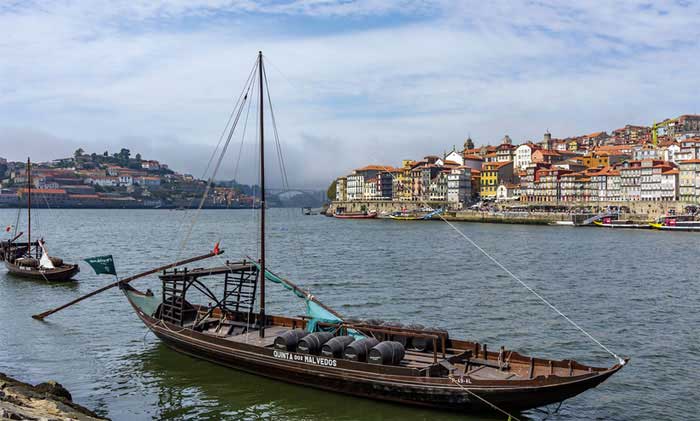Vinho do Porto, more commonly known as port wine, is a fortified alcoholic drink originating from the northern provinces of Portugal. Most people will have a bottle of Tawny sitting on their liquor shelf which will be ignored for long periods of time and maybe brought out on special occasions to be sipped at room temperature. Not only is this completely the wrong way to drink port, but it also changes the flavour completely and could well be the reason that many people have such negative associations with the product.
To fully understand port wine, you have to take a trip to Porto in Portugal. The name Porto translates as Port and sure enough, one of the first things you realise upon entering the town is that the Douro river which it is located upon functioned as a port. This is where the Port wine was exported from to be consumed around the world, mostly in Great Britain. This is the town where the wine takes it name from; Vihno do Porto - wine from Porto.
On the south side of the Douro, technically a town called Gaia, is where you will find all of the historic port cellars. The wine is produced in a small region about two hours upstream in the Douro Valley, however the wine was historically stored, matured and exported from the cellars which are still functioning today. The river is very shallow, and so all of the product used to be transported using smaller flat bottomed boats from the vineyards down to the cellars before being loaded onto larger ships to be taken around the world.
Port was produced out of a necessity for a long lasting wine. Portugal and England have the longest lasting and still functioning treaty, and while England was trading materials to create fabrics with, they wanted wine from Portugal in return. The long time it took to take the wine back to England often resulted in corked or oxygenated product which was of no use, so the Portuguese invested a method of fortifying the wine to ensure that it was still good for drinking by the time it reached England. The fermenting bacteria is killed off using a product called aguardente (roughly translated as fire water) which is a spirit, high in alcoholic content that fortifies the product. This is done after only a few days of fermentation which means that the wine is still very sweet, and the added product increases the alcoholic content which is why port wine tends to be considerably stronger than traditional wine.
Now on to the important part; the drinking. Port wine should be chilled. A tawny should be served around 12-14 degrees centigrade, and white, ruby and pink port wine should be served around 4-5 degrees centigrade. This is very important to the overall enjoyment of the wine, and is a detail that is often overlooked, even by very expensive and classy restaurants. There are, as mentioned, four different categories of port wine. Tawny is oaked, much like a chardonnay, and it picks up the woody colour from the barrels that it is stored in. Ruby port is stored in stainless steel instead and retains more of the original characteristics of the grape. White port is created using white grapes instead of red grapes, and pink is a new creation invented to try to put a new trendy slant on an otherwise considered very traditional product, made by using white grapes by keeping the skins on during pressing. All port wine should have five different grapes in.
Port wine is sweet, generally speaking, and so it isn't to everybody's liking, however if you visit a port cellar and speak to the experts about the history, the flavours and the product, you will start to appreciate it a lot more and may even start to enjoy what you didn't enjoy before. There are many to chose from, such as Porto Cruz with it's sleek refurbished and classy interior and rooftop bar overlooking the riverfront, or the more traditional Croft which is further up the hill and a little away from the tourists. If you visit Porto, make sure you make the time to sit down and experience a proper tasting and insight into the culture of the picturesque Portuguese town.

